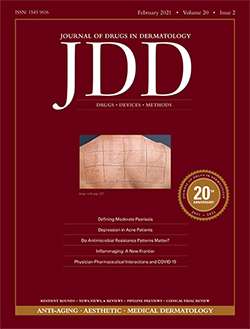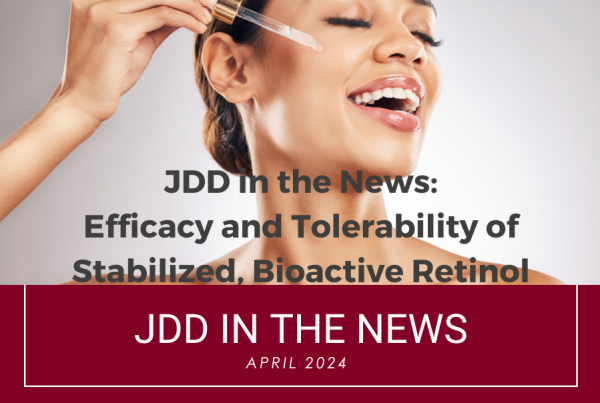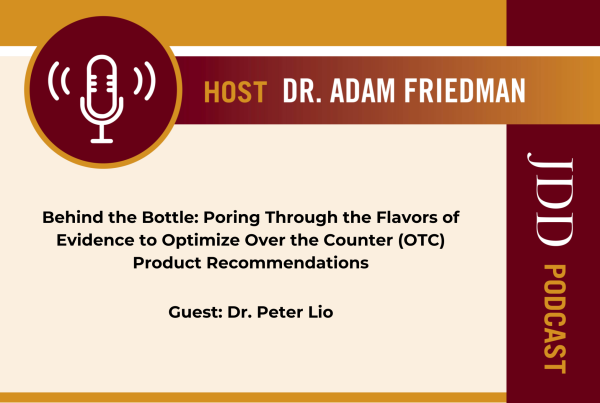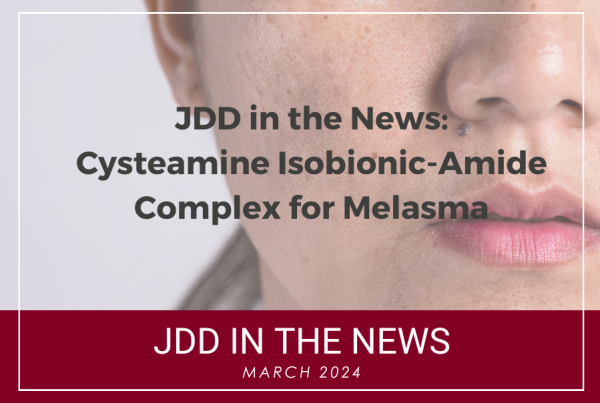JDD Highlights

It’s a hopeful time of year, and the articles published in this month’s issue underscore this hope and transition with researchers bringing forward new perspectives on chronic skin conditions like acne as well as anti-aging.
Acne, Anti-Aging, Aesthetics, Psoriasis, and more
by Heather Onorati
February marks a transition period from the month of new beginnings (January) to a month of advancement (March). In many ways our collective focus is shifting. With new vaccines now rolling out, there has been a shift in the pandemic; our national leadership has shifted; our seasons are transitioning (with many on the East Coast looking forward to warmer days ahead). It’s a hopeful time of year, and the articles published in this month’s issue underscore this hope and transition with researchers bringing forward new perspectives on chronic skin conditions like acne as well as anti-aging. Here’s a glimpse into the findings reported this month:
Article Highlights
-
As we age, the body’s ability to manage inflammation decreases due to a gradual increase in pro-inflammatory systemic cytokines that result in chronic, low-grade inflammation, termed “inflammaging”. This is thought to play a role in many age-related chronic conditions like cardiovascular disease, diabetes, certain cancers and Alzheimer’s disease. Other studies suggest the human microbiome also may play a role in inflammaging. In “Inflammaging in Dermatology: A New Frontier for Research,” researchers examine inflammaging within the context of the skin microbiome and its impact on chronic disease. The authors write that the skin, our largest organ, may be responsible for a larger role in promoting or preventing inflammaging.
-
Psoriasis is a condition continually studied as it has such a significant impact on patients and their quality of life. While many advances have been made, researchers continue to exam ways in which clinicians can improve treatment and disease management for these patients. In “Hospitalization in Patients With Psoriasis: Impact of Biological Therapies on Temporal Evolution,” researchers recognized the need to improve understanding of the impact of biological therapies on hospitalization. They retrospectively collected data on patients diagnosed with psoriasis within one institution who had at least one hospital admission during the study period. They established methods to compare hospitalizations at specified time periods since the evolution of biological therapies. While their data point to a gradual decrease in average hospitalization rate since 2004, they advise that there have been no extensive data to evaluate the impact of biological therapies on patient hospitalization.
-
In another recently published study, “Dermatologists’ Perspectives on Defining Moderate Psoriasis: The Canadian Moderate Psoriasis Survey,” researchers noted that there is a need to more fully define what constitutes “moderate plaque psoriasis” in order to improve care. In their survey of 69 responding Canadian dermatologists, the authors found that body surface area was used most commonly by respondents to describe disease severity. And, many consider disease location to be an indicator of severity.
-
Another skin condition that causes significant social and psychosocial distress is acne. As oral antibiotics are among the most commonly used systemic treatment, their use may be limited by potential side effects, according to the authors of “Differences in Depression and Distress Between Acne Patients on Isotretinoin vs Oral Antibiotics”. While isotretinoin is one of the most effective therapies, the authors note its potential side effects as well as controversy around its association with depression and suicidal ideation.
“A critical knowledge gap exists in defining the association between systemic anti-acne treatments and mental health outcomes,” the authors write. To explore this further, they examined the differences in mental health outcomes between patients treated with isotretinoin vs oral antibiotics and found that patients treated with isotretinoin experiences less psychosocial distress and symptoms related to depression compared with those patients treated with oral antibiotics.
-
And, since antimicrobial resistance continues to be a concern, physicians need to weigh this risk when considering treatments for patients with various skin infections. In “Do Antimicrobial Resistance Patterns Matter? An Algorithm for the Treatment of Patients With Impetigo,” a group of experts used a modified Delphi technique to develop a treatment algorithm to guide clinicians in the treatment of children and adults with impetigo.
The authors conducted a systematic literature review of recommendations for the current practice of impetigo treatment, which included research studies, clinical guidelines, consensus papers, and reviews published between 2014 and February 2020. They developed a step-by-step method to standardize and support clinical decision making, they write, which includes guidance for education and prevention, diagnosis and classification, treatment measures and follow-up. In addition, they discuss a newer topical antibiotic that appears to be safe and effective.
“The panel recognized that doctors need education in antibiotic stewardship principles, as, for some of them, it is an unknown field,” the authors write.
-
And finally, in an ongoing effort to better understand the impact of COVID-19 in the dermatology setting, researchers in one study reported that patients found teledermatology appointments to be a convenient and effective alternative to in-person visits during the pandemic. While the lack of physical touch and inability to provide close inspection can be frustrating for patients, this can be overcome by appropriate patient selection, the authors report in Patient Perceptions and Satisfaction With Teledermatology During the COVID-19 Pandemic: A Survey-Based Study.
-
Another impact of pandemic restrictions on the dermatology setting is the interaction between dermatologists and pharmaceutical company representatives, who often provide clinicians with educational information on drugs as well as samples for patients. In “The Impact of the COVID-19 Pandemic on Physician-Pharmaceutical Office-Based Interactions,” researchers examined the changing dynamic in the format of visits with and access to physicians by pharmaceutical representatives.
Editor's Picks
These articles and more make up this month’s February issue. Read more on aging, melasma and skin cancer in these articles also included:
- Efficacy and Tolerability of a Novel Topical Treatment for the Neck: A Randomized, Double-Blind, Regimen-Controlled Study
- New Protocol for Long-Term Results With a Multi-Pulse Nd:YAG Laser for Melasma Treatment: A Descriptive Cohort Study
- A Review of Hedgehog Inhibitors Sonidegib and Vismodegib for Treatment of Advanced Basal Cell Carcinoma
- Ingenol Mebutate as Treatment of Squamous Cell Carcinoma In Situ: A Case Series
- Intralesional 5-Fluorouracil for Treatment of Non-Melanoma Skin Cancer: A Systematic Review
You May Also Like









